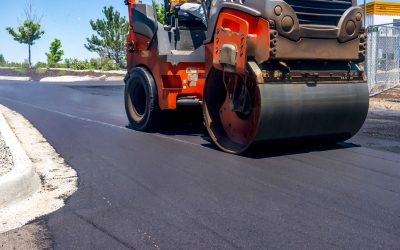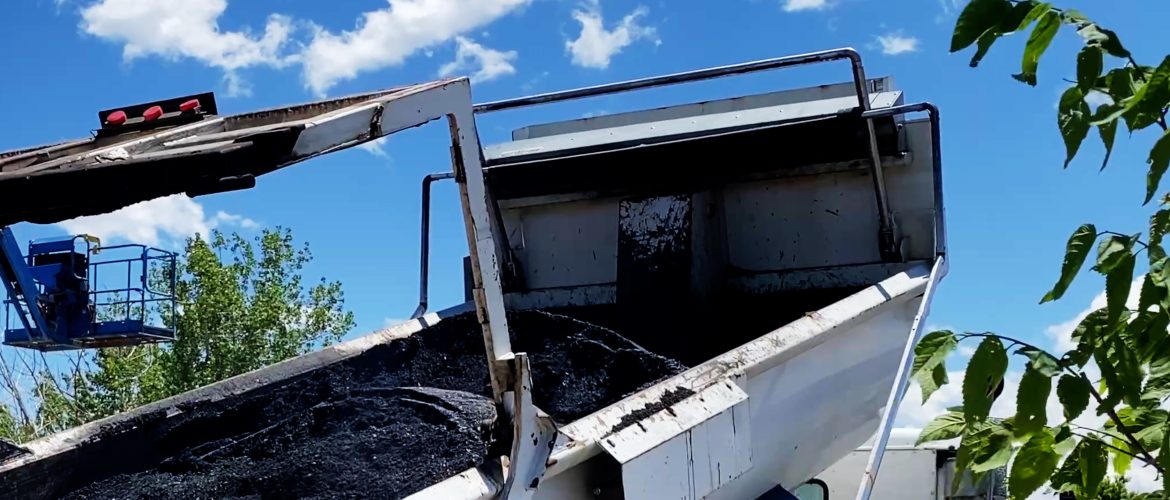Key Takeaways
- Regular maintenance, including sealcoating and crack filling, is crucial for extending asphalt pavement lifespan.
- Early detection and prompt repair of issues like cracking and potholes can prevent more extensive damage.
- Professional expertise is valuable for developing and implementing effective long-term maintenance strategies.
Asphalt paving, a cornerstone of modern infrastructure, serves as the foundation for driveways, parking lots, and highways. Understanding its lifespan and implementing effective maintenance techniques is crucial for property owners, facility managers, and municipal officials alike. This comprehensive guide explores the factors influencing asphalt pavement durability and provides actionable strategies to extend its life, ensuring long-term value and performance.
The Typical Lifespan of Asphalt Pavement
Asphalt pavement, when properly installed and maintained, can last between 15 to 30 years. However, this lifespan can vary significantly based on several factors. Climate conditions play a crucial role, with extreme temperatures and freeze-thaw cycles potentially accelerating deterioration. Traffic volume and weight are equally important, as heavy vehicles can cause more rapid wear. The quality of the initial installation, including proper base preparation and asphalt mix design, also significantly impacts longevity.
Compared to concrete roads, asphalt pavements generally have a shorter lifespan. Concrete pavement can last up to 50 years by observing asphalt pavement proper maintenance practices. However, asphalt offers advantages in terms of cost-effectiveness and ease of repair. Understanding these differences is essential for property owners and managers when making decisions about pavement materials.
The concept of pavement preservation is central to maximizing asphalt lifespan. This proactive approach involves applying treatments to maintain good condition rather than waiting for significant deterioration. By implementing preservation techniques early and consistently, the overall lifespan of asphalt pavement can be extended considerably, potentially doubling its service life in some cases.
Signs of Asphalt Deterioration: When to Take Action
Recognizing the early signs of asphalt deterioration is crucial for timely intervention. Common indicators include surface cracking, which can start as small hairline fractures and progress to more severe alligator cracking if left untreated. Potholes, another telltale sign, form when water penetrates the asphalt surface and weakens the underlying layers. Fading or oxidation of the surface, resulting in a gray appearance, indicates the loss of essential oils and can lead to further damage if not addressed.
Rutting, characterized by depressions in the wheel paths, suggests structural issues that may require more extensive repair. Edge cracking, often seen along the perimeter of asphalt driveways or roads, can indicate poor drainage or lack of edge support. By identifying these signs early, property owners can take prompt action to prevent minor issues from escalating into major, costly repairs.
Regular inspections are key to catching these problems in their infancy. Establishing a routine inspection schedule, particularly after severe weather events or heavy usage periods, can help maintain the integrity of the asphalt surface. Documenting these inspections and any observed changes over time can provide valuable insights into the pavement’s condition and guide maintenance decisions..
Essential Maintenance Techniques for Asphalt Longevity
CImplementing a comprehensive maintenance program is vital for extending asphalt pavement lifespan. Asphalt sealcoating stands out as one of the most effective preventive measures. This process involves applying a protective layer over the asphalt surface, shielding it from UV rays, water penetration, and chemical spills. The frequency of sealcoating depends on various factors, but generally, it’s recommended every 2-3 years for optimal protection.
Crack sealing is another critical maintenance technique. Addressing cracks promptly prevents water from seeping into the base layers, which can lead to more severe damage. Using high-quality crack filler materials and ensuring proper application techniques are essential for effective repair. For larger cracks or those that have begun to develop into potholes, patching may be necessary. This involves removing the damaged area, cleaning it thoroughly, and filling it with new asphalt material.
Proper drainage is often overlooked but plays a crucial role in asphalt preservation. Ensuring that water drains away from the pavement surface prevents pooling, which can lead to accelerated deterioration. Regular cleaning of drainage systems and addressing any grading issues can significantly contribute to extending pavement life.
For commercial properties or areas with heavy traffic, consider implementing a pavement management system. This approach involves regular assessments, prioritizing repairs, and planning for long-term maintenance needs. By taking a systematic approach to asphalt care, property managers can optimize their maintenance budgets and extend the overall lifespan of their pavement assets.
Cost-Effective Strategies for Long-Term Asphalt Maintenance
While regular maintenance may seem like an added expense, it’s a cost-effective strategy in the long run. The cost of asphalt maintenance is significantly lower than full replacement, and proactive care can delay the need for major repairs or reconstruction. For example, the cost of sealcoating a driveway every few years is minimal compared to the expense of completely replacing a deteriorated surface.
When budgeting for asphalt maintenance, consider the lifecycle costs rather than just immediate expenses. This approach takes into account the initial installation cost, ongoing maintenance, and eventual replacement. By investing in regular upkeep, property owners can extend the time between major renovations, ultimately saving money over the pavement’s lifespan.
For those managing multiple properties or extensive pavement areas, developing a comprehensive maintenance plan can help prioritize and allocate resources effectively. This might involve categorizing different sections based on their condition and usage, allowing for targeted interventions where they’re most needed.
Exploring eco-friendly maintenance options can also provide long-term benefits. Some modern sealcoating products offer enhanced environmental performance without compromising protection. These options may be particularly appealing to environmentally conscious property owners or those in areas with strict environmental regulations.
Advanced Techniques for Asphalt Preservation
As asphalt technology evolves, new preservation techniques are emerging that can further extend pavement lifespan. Micro-surfacing, for instance, involves applying a thin, high-performance asphalt mix to the existing surface. This technique can effectively address minor surface distresses and provide a new wearing course, potentially adding several years to the pavement’s life.
Infrared asphalt repair is another innovative method gaining popularity. This technique uses infrared heat to soften existing asphalt, allowing for seamless integration of new material. It’s particularly effective for repairing potholes and other localized damage, providing a more durable fix than traditional patching methods.
For pavements nearing the end of their service life, asphalt overlay or resurfacing can be a cost-effective alternative to full reconstruction. This process involves applying a new layer of asphalt over the existing surface, effectively renewing the pavement. However, it’s crucial to address any underlying structural issues before applying an overlay to ensure long-term success.
Incorporating these advanced techniques into a comprehensive maintenance strategy can significantly enhance the durability and performance of asphalt pavement. By staying informed about the latest preservation methods and applying them judiciously, property owners and managers can maximize the return on their pavement investment.saving money on premature replacement and ensuring a smooth, attractive surface for years to come.
The Role of Professional Expertise in Asphalt Maintenance
While some aspects of asphalt maintenance can be managed independently, professional expertise is often invaluable for ensuring optimal results. Experienced contractors can provide accurate assessments of pavement condition, recommend appropriate treatments, and execute repairs with precision. They have access to specialized equipment and high-quality materials that may not be available to the average property owner.
When selecting a contractor for asphalt maintenance, look for those with a proven track record and proper certifications. Ask for references and examples of similar projects they’ve completed. A reputable contractor should be willing to provide a detailed explanation of their recommended maintenance plan and the expected outcomes.
For large-scale projects or those managing extensive pavement assets, consider partnering with a pavement engineering firm. These specialists can provide comprehensive pavement management services, including detailed condition assessments, long-term maintenance planning, and quality control oversight for repair work.
By leveraging professional expertise, property owners and managers can ensure that their asphalt maintenance efforts are both effective and efficient, maximizing the lifespan of their pavement investments..
Environmental Considerations in Asphalt Maintenance
As sustainability becomes an increasingly important consideration in property management, it’s worth exploring eco-friendly approaches to asphalt maintenance. Some modern sealcoating products are formulated with lower volatile organic compound (VOC) content, reducing their environmental impact. Additionally, recycled asphalt pavement (RAP) can be used in many repair and resurfacing applications, conserving resources and reducing waste.
Proper maintenance itself can be considered an environmentally friendly practice. By extending the lifespan of existing pavements, we reduce the need for new materials and the energy-intensive processes involved in pavement reconstruction. This aligns with the principles of sustainable infrastructure management and can be an important factor for environmentally conscious property owners.
When implementing drainage solutions as part of asphalt maintenance, consider incorporating green infrastructure elements. Permeable pavement systems or bioswales can help manage stormwater runoff more effectively, reducing the environmental impact of large paved areas.
By considering these environmental aspects in asphalt maintenance planning, property owners can contribute to broader sustainability goals while also protecting their pavement investments.
FAQ
How long does asphalt pavement typically last?
Asphalt pavement typically lasts between 15 to 30 years when properly installed and maintained. However, this lifespan can vary significantly based on factors such as climate conditions, traffic volume, and maintenance practices. In optimal conditions with regular upkeep, some asphalt pavements have been known to last up to 35 years. It’s important to note that the initial quality of installation plays a crucial role in determining longevity. Pavements with a properly prepared base and high-quality asphalt mix tend to have longer lifespans. Regular maintenance, including timely repairs and preventive treatments, can significantly extend the useful life of asphalt pavement beyond these average figures.
What are the most effective ways to extend asphalt pavement lifespan?
The most effective ways to extend asphalt pavement lifespan include:
- Regular sealcoating every 2-3 years to protect the surface from UV rays, water penetration, and chemical spills.
- Prompt crack filling to prevent water infiltration and further deterioration.
- Maintaining proper drainage to prevent water pooling on the surface.
- Implementing a regular inspection and maintenance schedule to catch and address issues early.
- Applying appropriate treatments based on the pavement’s condition, such as patching for potholes or micro-surfacing for surface renewal.
These practices, when implemented consistently, can significantly prolong the life of asphalt pavement by preventing minor issues from escalating into major problems that require costly repairs or premature replacement.
How often should asphalt pavement be sealcoated?
Asphalt pavement should typically be sealcoated every 2-3 years for optimal protection. However, the exact frequency can depend on several factors:
- Climate: Areas with harsh weather conditions may require more frequent sealcoating.
- Traffic volume: Pavements with heavy traffic may need sealcoating more often.
- Sun exposure: Surfaces with high sun exposure may benefit from more frequent application.
- Overall pavement condition: Older or more worn pavements might need sealcoating more frequently.
For commercial properties or areas with heavy use, sealcoating might be recommended every 1-2 years. Conversely, residential driveways with light use might extend to 3-4 years between applications. It’s best to consult with a professional who can assess the specific needs of your pavement and recommend an appropriate sealcoating schedule.
What are the signs that asphalt pavement needs repair?
Key signs that asphalt pavement needs repair include:
- Cracking: Small cracks can quickly expand if not addressed promptly.
- Potholes: These indicate significant structural damage and require immediate attention.
- Fading or graying of the surface: This suggests oxidation and loss of essential oils.
- Rutting or depressions: These can indicate problems with the base layer or heavy traffic wear.
- Edge cracking: Often seen along the perimeter, suggesting poor drainage or lack of edge support.
- Raveling: When the surface becomes rough and aggregate particles begin to come loose.
- Oil stains: While primarily cosmetic, they can soften the asphalt if left untreated.
Regular inspections can help identify these issues early, allowing for timely intervention and preventing more extensive and costly repairs down the line.
How does asphalt pavement lifespan compare to concrete?
Asphalt pavement typically has a shorter lifespan compared to concrete pavement:
- Asphalt pavement: 15-30 years with proper maintenance
- Concrete pavement: 20-50 years with proper maintenance
However, asphalt offers several advantages:
- Lower initial installation cost
- Faster installation and curing time
- Easier and often less expensive to repair
- Smoother ride quality, especially when new
- Better performance in cold climates due to flexibility
Concrete, while longer-lasting, is generally more expensive to install and repair. It’s also more prone to cracking in freeze-thaw cycles. The choice between asphalt and concrete often depends on specific project requirements, budget constraints, and long-term maintenance plans. In many cases, the lower upfront cost and ease of maintenance make asphalt a preferred choice, despite its shorter overall lifespan.




